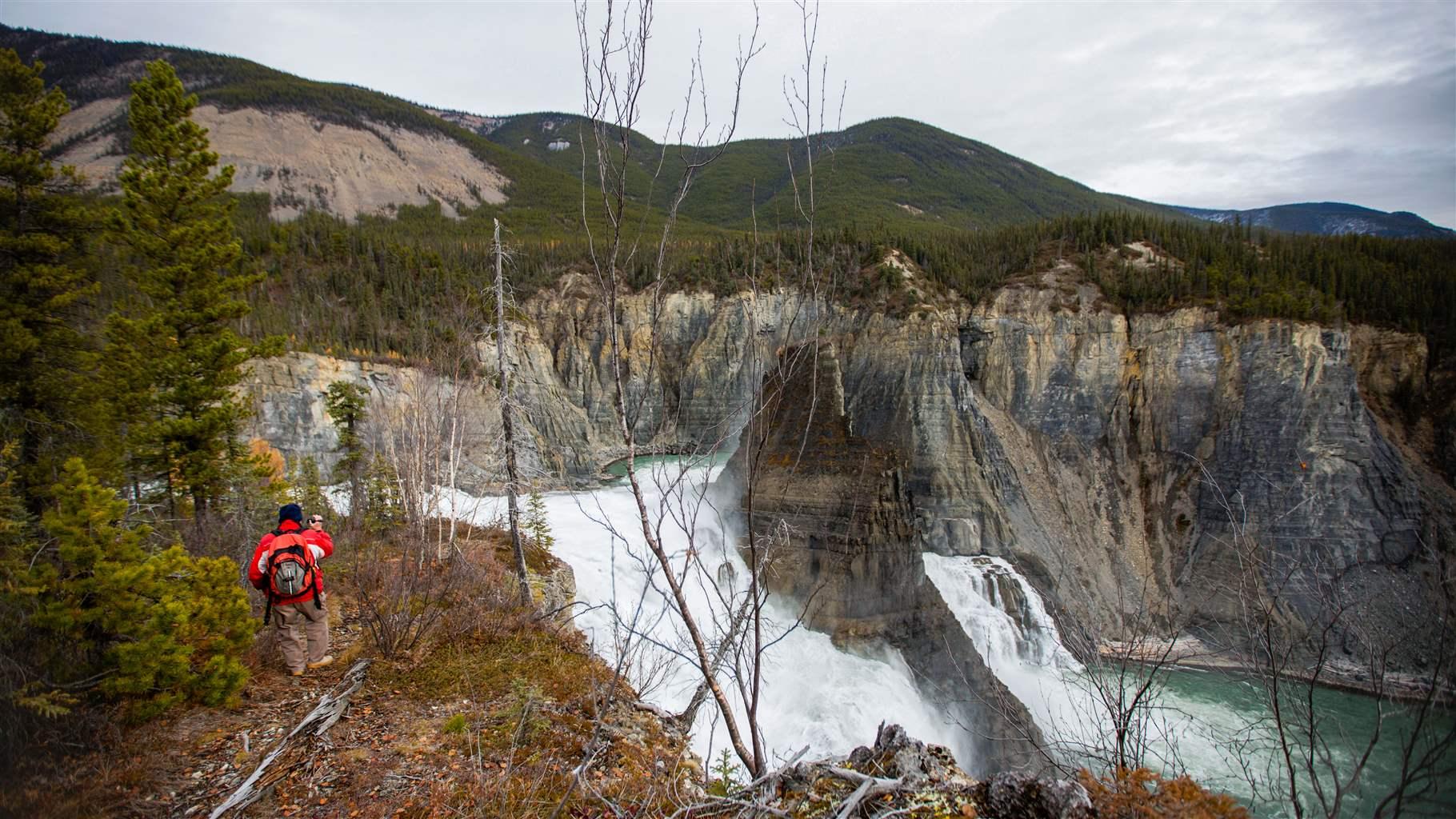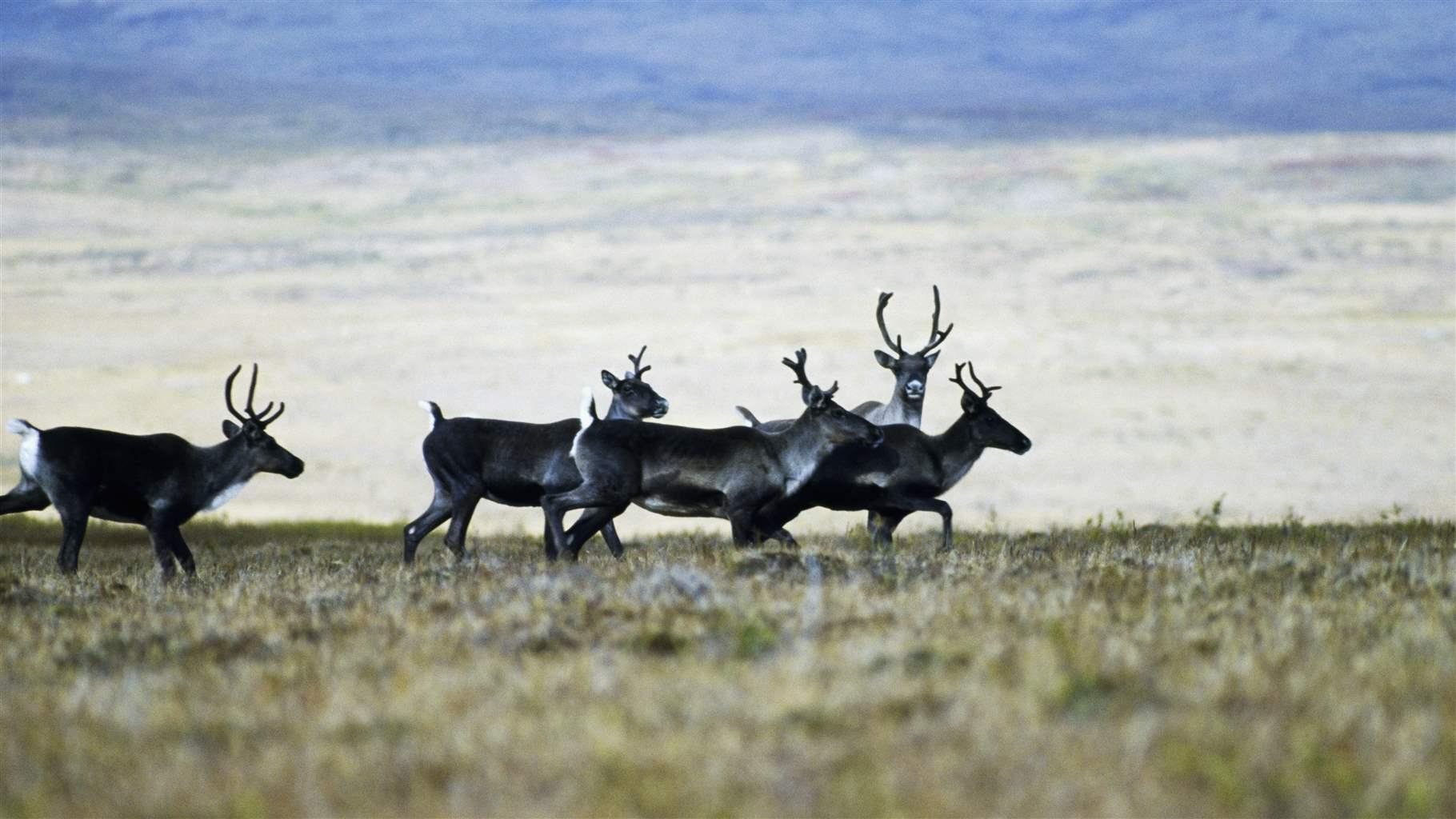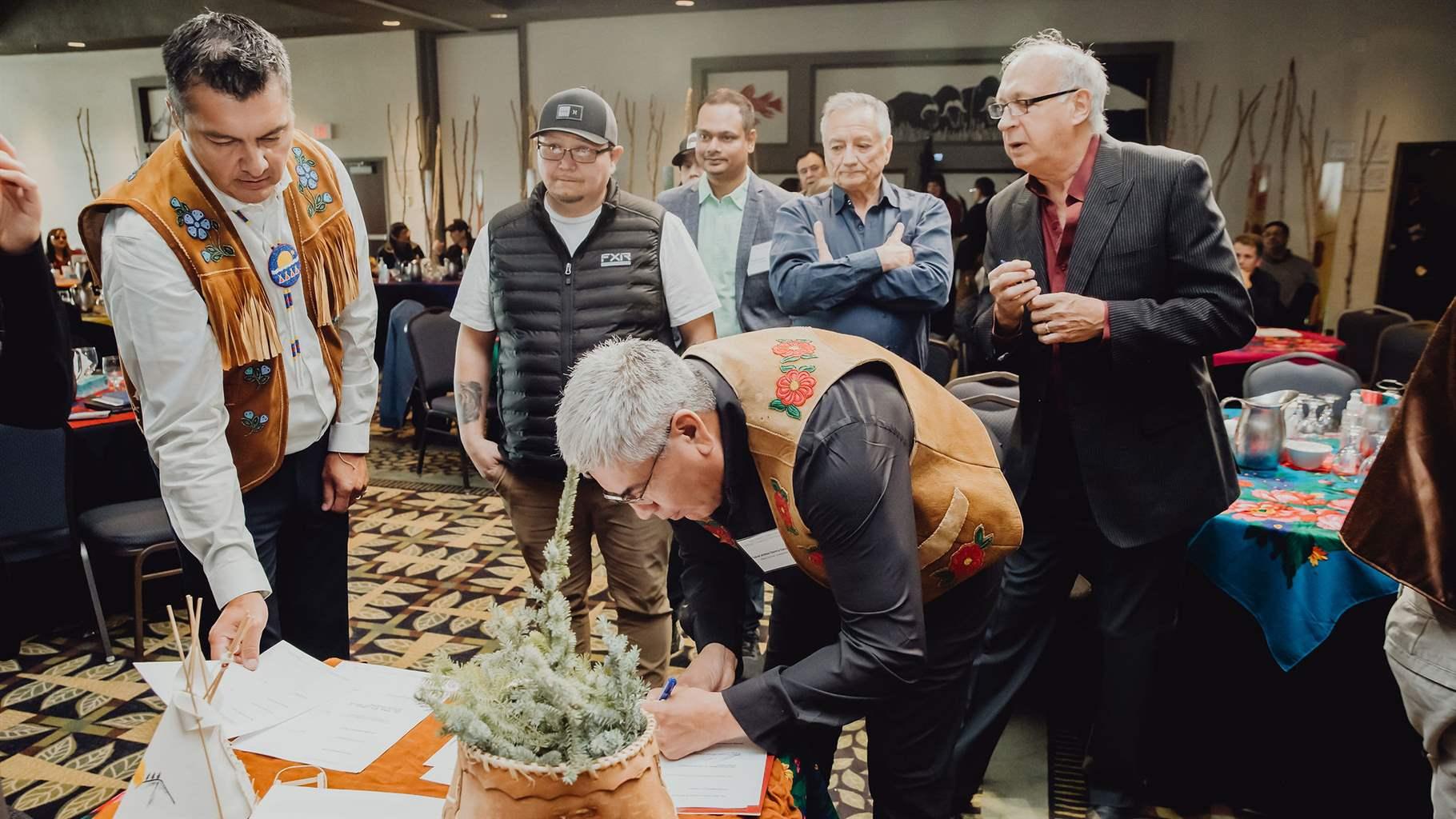Historic Indigenous-Led Conservation Agreement for Northwest Territories Nears Completion in Canada
Long-term funding will secure large-scale protection for people and nature

At 135 million hectares—nearly the size of Alaska—the Northwest Territories (NWT) in Canada is the second largest territory in the world’s second largest country. And it is here that 23 Indigenous governments—80% of those in the territory—have been leading a collaboration with public and private partners to develop a conservation and community development initiative that is unprecedented in scope and scale and promises to deliver tremendous value and benefits for people and nature.
Known as the NWT Project Finance for Permanence (PFP) initiative, it is one of four Indigenous-led conservation proposals in Canada that rank among the world's largest. Once fully funded and implemented, the NWT PFP initiative could ensure durable protection throughout at least 30 million hectares, sustain thriving cultures, and promote a healthy and equitable economy.
For almost two years, Indigenous Governments and organizations have led partners—including the Government of Canada, the Government of the Northwest Territories; and the philanthropic community, represented by The Pew Charitable Trusts—in developing this long-term, region-wide conservation and community development initiative. The Northwest Territories is the ancestral and current home of generations of Indigenous people who have lived on the land since time immemorial, and centering the NWT PFP initiative on Indigenous leadership ensures genuinely transformative outcomes for the people, lands, and waters and includes support for community well-being and healing, stewardship of protected and conserved areas, meaningful management practices for biodiversity and species at risk, diversified economies, advancements to reconciliation, and strengthening cultures. Their leadership has meant that Indigenous-led conservation, including creation of vast protected areas, is advancing rapidly.
The Northwest Territories’ intact ecosystems are so extensive that they register on a global scale. With one-third of the vast area covered by forests, the Northwest Territories comprises about 20% of all of North America’s boreal forest lands. Those lands contain extensive freshwater habitats and abundant fish and wildlife—including more than 280 species of birds, plus caribou, moose, grizzly bears, and some of the last remaining wood bison. These precious lands also store over 44 billion metric tons of sequestered carbon—more than the amount of carbon dioxide the entire world emits in a year.
In October 2023, partners together celebrated the signing of a framework agreement. The agreement, an interim step in the planning process, outlined areas of consensus among the partners and set the stage for the final phase of a deal closing. The agreement also comes as the Government of Canada deepens its commitment to Indigenous-led conservation and has an opportunity to show strong leadership, such as the government’s announcement to invest $800 million initially to support the NWT agreement and three other Indigenous-led conservation initiatives.
Having so many Indigenous Governments unite on conservation-related matters indicates the potential Indigenous Governments see in the initiative. Although communities have had long-standing ambitions to take care of traditional lands and waters, they have been constrained in large part by a lack of political support and, importantly, the long-term resources needed for such activities.
The initiative uses a PFP approach. PFPs are designed to achieve—and sustain—transformative, world-leading investments in conservation, reconciliation, and community economic development. The NWT PFP’s objectives include conserving land and water, protecting biodiversity, supporting thriving cultures, building community capacity, and contributing to healthy and equitable economies. Support for Indigenous Guardians—trained stewards of the land—is central to achieving these objectives, which could employ approximately 3% of the Indigenous population in the Northwest Territories. All aspects of the initiative—including its funding, governance, and management—will recognize and respect the rights, interests, authorities, and jurisdictions of each PFP partner.
The partners are aiming to conclude a final PFP agreement by spring 2024, and outcomes achieved under the PFP are intended to be supported and sustained over the long term. These outcomes, which are locally and regionally led, have global implications. The initiative will provide the world with a valuable model of Indigenous-led conservation. It will also advance Canada’s goal of conserving 30% of its lands and waters by 2030, a global agreement Canada led when it co-hosted the 15th Conference of the Parties to the United Nations Convention on Biological Diversity in Montréal in late 2022. The NWT PFP alone is likely to add more than 3% to Canada’s current protection level, which stands at roughly 14%.
Prime Minister Justin Trudeau announced the government’s $800 million commitment at that same global gathering. To set PFPs up for success, the government of Canada will need to show leadership, take urgent action, and dedicate the necessary funding and resources. Robust funding is money well spent: Each dollar spent on Guardians programs, for instance, generates an estimated $2.50 to $4 in social benefits.
For more than two decades, Pew has supported Indigenous-led conservation, including since the late 1990s in the Northwest Territories. Along with other partners, Pew provided direct financial assistance to First Nations to engage in land use planning, to establish Indigenous protected and conserved areas, and to expand Indigenous Guardians programs—complemented with in-kind communications, policy analysis, and networking and partnership building support.
In 2021, Pew and other partners came together to form the Enduring Earth collaboration, whose goal is to work with local partners to protect 600 million hectares in PFP initiatives around the world by 2030. The Northwest Territories will be among the first phase of PFPs completed with Enduring Earth’s support.
The NWT PFP is founded on Indigenous leadership, rights, reconciliation, and support for communities. It is centered on conservation, culture, and sustainability; fits within and lifts up existing governance systems; and builds on existing and emerging systems of stewardship of lands, waters, and resources. It also contributes significantly to Canada’s international commitments to sustain and enhance biodiversity and advances the goals of the philanthropic donors and conservation groups.
Pew and our partners are proud to support bold and equitable solutions by ensuring that as we work to achieve global conservation and stewardship goals, we do so in a way that respects Indigenous rights and values and sustains outcomes over time.
Tom Dillon is a senior vice president at The Pew Charitable Trusts, leading the organization’s work on conservation and environment initiatives in the United States and around the world. Gretchen Tearle is a principal officer, leading Pew’s land conservation efforts in Canada.














